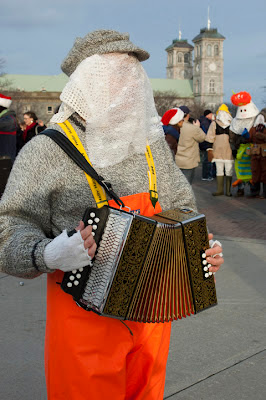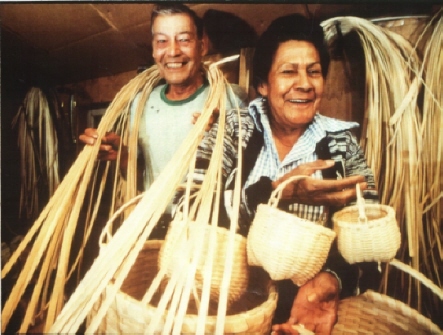- The Heritage Foundation of Newfoundland and Labrador -
- recognizes iconic marine engines in 2012 Provincial Folklife Festival -
There is a sound that was once ubiquitous to the waters in Newfoundland that has sparked the interest of the Heritage Foundation of Newfoundland and Labrador (HFNL). Putt-putt; putt-putt – the sound of Make and Break engines once filled the skies from dawn to dusk as busy fisherman worked to sustain their families and their island.
This summer HFNL wants to restore the interest that Newfoundlanders once had in these rhythmic engines. A series of oral history interviews, to be conducted throughout the island, will lead up to the 2012 Provincial Folklife Festival in Bonavista, which will focus on the iconic marine engines. Events for the festival will be held on Saturday, August 4 in Bonavista, as part of the town’s inaugural Church Street Festival.
Joelle Carey is a public folklore intern with HFNL and a graduate student in Memorial University’s Department of Folklore.
“By working on this project we hope to promote the marine history of the province,” says Carey. “It’s a great opportunity to get people talking about these engines that are such an important part of life in Newfoundland and Labrador.”
The oral history project will take the form of interviews conducted by Carey throughout the summer months. These interviews, along with pictures of the motors found, will then be added to Memorial University’s Digital Archives Initiative. This archive will be accessible to the public online.
The Heritage Foundation has secured the partnership of Parks Canada through association with Ryan Premises National Historic Site in Bonavista.
“Through the many conversations I have had in organizing this event, I am repeatedly inspired by the glazed-eyes that come over people and the small smiles that appear on their faces as they recall their particular fond memories of times spent on or near the water,” says Pat Carroll, with Parks Canada.
“The Ryan Premises National Historic Site of Canada is honoured to be a part of this event,” says Carroll, “and to have a role in the celebration and rejuvenation of one of the resounding traditions of Newfoundland and Labrador, Atlantic Canada and of the whole of Canada.”
The festival events will take place in Bonavista on August 4 and will include a Make and Break flotilla and a parts swap.
HFNL would like to hear from anyone with memories or an interest in Make and Break engines. If you are interested in getting involved by sharing your stories or if you have an engine, please email joelle@heritagefoundation.ca or call, toll free, 1-888-739-1892 ext. 5.
This summer HFNL wants to restore the interest that Newfoundlanders once had in these rhythmic engines. A series of oral history interviews, to be conducted throughout the island, will lead up to the 2012 Provincial Folklife Festival in Bonavista, which will focus on the iconic marine engines. Events for the festival will be held on Saturday, August 4 in Bonavista, as part of the town’s inaugural Church Street Festival.
Joelle Carey is a public folklore intern with HFNL and a graduate student in Memorial University’s Department of Folklore.
“By working on this project we hope to promote the marine history of the province,” says Carey. “It’s a great opportunity to get people talking about these engines that are such an important part of life in Newfoundland and Labrador.”
The oral history project will take the form of interviews conducted by Carey throughout the summer months. These interviews, along with pictures of the motors found, will then be added to Memorial University’s Digital Archives Initiative. This archive will be accessible to the public online.
The Heritage Foundation has secured the partnership of Parks Canada through association with Ryan Premises National Historic Site in Bonavista.
“Through the many conversations I have had in organizing this event, I am repeatedly inspired by the glazed-eyes that come over people and the small smiles that appear on their faces as they recall their particular fond memories of times spent on or near the water,” says Pat Carroll, with Parks Canada.
“The Ryan Premises National Historic Site of Canada is honoured to be a part of this event,” says Carroll, “and to have a role in the celebration and rejuvenation of one of the resounding traditions of Newfoundland and Labrador, Atlantic Canada and of the whole of Canada.”
The festival events will take place in Bonavista on August 4 and will include a Make and Break flotilla and a parts swap.
HFNL would like to hear from anyone with memories or an interest in Make and Break engines. If you are interested in getting involved by sharing your stories or if you have an engine, please email joelle@heritagefoundation.ca or call, toll free, 1-888-739-1892 ext. 5.




























